5 Nights / 6 Days
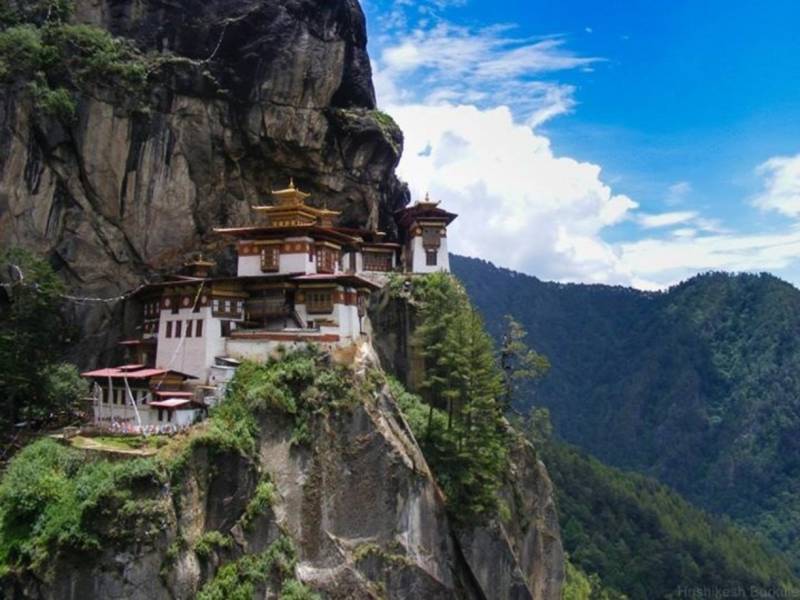
On Arrival At Paro Airport, You Will Be Received By Our Local Representative and Will Be Transferred to Thimphu Hotel (60 Kms / 1.5 Hrs)
historic Monument
after Relaxing, Proceed for Thimphu Local Sightseeing.
kuenselphodrang:
the Kuenselphodrang or the Buddha Point is the World?s Largest Sitting Buddha Statue, the Statue is 167 Feet High. the Statue is Situated On Top of a Hill Overlooking the City of Timphu, It Can Be Accessed By Road and is About 15 Minutes Away from the City?scenter. the Word Kuensel Means Everything is Clear and from this Place You Will Sure Enjoy a Great View of the Thimphu Valley On Both Sides. the Statute Will House a Temple Inside It, the Statue and Its Adjoining Car Park and Recreational Center are Currently Under Construction and is Expected to Be Ready By December 2012. the Statue is Constructed Out of Bronze and is Studded with Many Semi-precious Stones. Since They are No Factories in Country that Can Make such a Large Bronze Cast Structure, Statute is Being Manufactured in China and the Pieces are Brought to Bhutan and are Assembled Here. On the Drive to the Statue the Steep Winding Hill Road Offers An Unparalleled View of the City of Thimphu and is An Excellent Place to Capture a View of the City Especially After Dark. a Journalist Once Described the View as “seeing An Osasis of Light in the Desert of Darkness “as the City Light of Thimphu Shine Very Bright in An Otherwise Dark Thimphu Valley.
motithang Takin Preserve: the Motithangtakin Preserve also Known as the Thimphu Zoo By Many is a Small Natural Preserve for the Takinbhutan?s National Animal. It Was Originally a Mini Zoo, But It Was Converted in a Preserve Later On as the Takin. the Mini Zoo Contained a Small Number of Takin But the King of Bhutan Later Decreed that It Was Improper for a Buddhist Nation to Keep An Animal in Captivity. the Animals Were Set Free and the Zoo Was Shut Down, But for Some Reason the Takin Refused to Leave the Area for the Forests Nearby. Instead the Animals Were Frequesntly Found Roaming Around the Streets of the Capital City in Search for Food. as a Result the Government Decided to Demarcate An 8 Acre Fenced Location as the Motithangtakin Preserve. the Preserve is a Forested Preserve that Mimics the Takin?s Natural Habitat, in Addition to the Takin There are a Few Musk Deer and Barking Deer that Live Inside the Preserve. There are Plans to Expand the Preserves Collection to Include other Rarely Seen Animals that Live in Bhutan, Currently the Preserve Plans to Add the Red Panda and the Himalayan Serow to the Preserve.
later in the Evening You Can Visit Tashichhodzong: the Tashichhodzong is a Buddhist Monastery Cum Fortress At the Northern Edge of Thimpu the Capital City of Bhutan. the Dzong Was Built On the Western Bank of the River Wang Chu, and Has Historically Served At the Seat of the Drukdesi or the Dharma Raja of Bhutan?s Government. After the Kings Assumed Power in 1907 this Post Was Combined with that of the King and Thimphu Severed as the Summer Caital of the Kingdom Before Becoming the Full Time Capital of Bhutan. the Original Thimphudzong (the Dho-ngyendzong) is Said to have Been Constructed in 1216 By Lama Gyalwalhanangpa. and Was Later Taken Over By Lama Phajodrukgomshigpo Before the Dzong Was Conquered By Shabdrungngawangnamgyal, Who Found the Dzong to Be Too Small and Expanded It to What is Now Known as Thetashichhodzong is also Called the "fortress of Glorious Religion." It Was Erected in 1641 and Was Subsequently Rebuilt By King Jigmedorjiwangchuck in the 1960s. the Dzong Has Been Seat of the Royal Government Since 1952 and Presently Houses the Throne Room and the Kings Secretariat. the Tashichhodzong is also Home to Several Ministries of the Bhutanese Government, and the Central Monk Body Which is the Apex Organization of the Country's Main Spiritual Order. the Monument Welcomes Visitors During the Thimphutsechu Festival Which is Held in Autumn Each Year. the Dzongs Main Structure is a Two Striped Quadrangle with 3 Storied Towers On Each of Its Four Corners.
return to Hotel in the Evening.
hotel
overnight Stay At Thimphu Hotel
Early morning, enjoy your breakfast at Thimphu Hotel
Historic Monument
Post breakfast visit the Immigration Office to extend your permit to go towards Punakha. Then, visit the following
Wangditse Hike:It is a short hike above Sangaygang (BBS Tower). You have to walk across the Pine forest. The walk is short and normal hike, on the way you will get to see the beautiful view of the entire Thimphu Town.
Jungshi Handmade Paper Factory: This is a private factory and they manufacture a special watermark paper as well as products such as lampshades, envelopes and other objects made of traditional Bhutanese paper. They make great gifts to take home with you and are genuinely unique. It is not just the texture of these handmade paper products that will intrigue you, but also their unique earth tones and natural hews. This factory manufactures a special watermark paper as well as products such as lampshades, envelopes and other objects made of traditional Bhutanese paper. Bhutan protects its environment through long-term sustainability, and they follow it because they do not destroy the plant when they extract the raw material required. Paper products are manufactured from "daphnepapyracea".
Folk Heritage Museum: The folk heritage museum was open to the general public in 2001 upon completion. It treasures troves of culture and rich Bhutanese heritage provide rich insights into the Bhutanese ethos. Try to schedule your visit during the morning hours since the museum is less crowded at that time and there is plenty of sunlight to go around. The folk heritage museum is housed in a replica traditional Bhutanese house learn first-hand about Bhutan?s rich cultural traditions, its deeply rooted heritage which spans thousands of years and the Bhutanese way of life. The tour of this almost living museum will also give you a glimpse onto how many rural folk of the country live today following the ancient Bhutanese ways.
Memorial Chorten: Referred to as theMemorial Chorten, it’s actual name is GongzoChorten or GyaldrenChorten. The chorten (stupa) is a chief landmark in the capital city and is also a most sacred place of worship for local people. The idea of the chorten was conceptualized by the Third King His Majesty JigmeDorjiWangchuck to ward-off negative energies. After His Majesty’s demise, the chorten was built in his memory by the 4th King and the then Queen Mother in 1972. Many old people come here early in the morning to circumambulate and say their prayers in the hopes of garnering enough good karma for their afterlife; they are joined by the middle and the younger generation in the evenings who also come to do either the same thing or to just relax their mind. The doors of this stupa remain mostly closed except on holy days. Inside, there are three stories and on each floor are statues of protective deities.
ChangangkhaLhakhang: It is a 12th century temple sitting on top of a hill overlooking Thimphu valley with the main statue of Chenrizig (The Buddha of Compassion). This temple is often mistaken for a dzong by visitors because it looks like one, and apart from the temple it also houses a monastic school. Most of the couples go to this temple soon after birth to get blessings for their child.
Return to hotel in the evening,
Hotel
Overnight stay at Thimphu Hotel
Early Morning, Enjoy Your Breakfast At Thimphu Hotel
natural Attractions
post Breakfast, Drive Toward Punakha (90 Kms / 3 Hrs), Stop At Dochula Pass (3,100 M), Where On a Sunny Day, You Can Get Stunning Views of the Himalayan Ranges. the Dochu La Pass is Probably the Best Known Mountain Pass in Bhutan. Located At An Altitude of 3150 Meter Above Sea Level, the Dochu La Pass is About 30 Kilometer Away from the Capital City Thimphu and the Road to Punakha. On a Clear Day the Pass Offers Visitors a Spectacular View of the Majestic Eastern Himalayan Ranges. a Cup of Hot Coffee or Tea At the Pass Has Almost Become Part of Tradition for People Travelling to and Fro from Punakha to the Capital City.
there is a Small Cafeteria At the Pass that Offers a Chance for Travelers to Enjoy a Hot Beverage or a Snack, It is Located Just Off the Road and Overlooks the Pass and is An Ideal Place to Sit Back, Relax and Enjoy the View. Another Striking Feature At the Pass are the 108 Drukwangyalkhangzangchortens, that Were Built for the Well-being of all Sentiment Beings On Earth. the 108 Chorten Were Built as a Tribute to the Kings of Bhutan for Their Selfless Service and Leadership They Offer to the People of Bhutan. These Stupas or Chortens also Represent the Peoples Love, Appreciation and Loyalty Towards the Country’s King.
continue Drive Towards Punakha and Stop At Lobesa Village and have Lunch Before Going for a Short Hike to Chimi Lhakhang (temple of Fertility), It is Dedicated to Lam Drukpakuenley (divine Mad Man) and is the Place from Where Phallusesoriginated as the Symbol of Fertility and Protection and Can Be Seen Everywhere in Bhutan, On House Walls and Roofs and Altars. Childless Couples Usually Go to this Temple to Get Blessings So that They Conceive and are Blessed with a Child.
(note: the Temple and Has Some Sexual Depictions. You May Want to Reconsider Visiting this Place if You are Not Comfortable with Children Seeing These)
then Drive to Punakhadzong: the Punakhadzong or the Pungtangdechenphortangdzong is Located At the Confluence of the Mo Chhu and the Po Chhu River, Combine to Form the Puna Tsang Chu Which in Turn is a Tributary of the Mighty Brahmaputra River. the Dzong Was Constructed By Zhabdrungngawangnamgyal in 1638 On the Exact Spot as Prophesized By the Guru Rinpoche Some 800 Years Ago. According to the Prophecy of Guru Rinpoche “a Person Named Namgyal Will Arrive At a Hill that Looks like An Elephant”. Another Legend Associated with the Dzong is that of Zowepalep, the Architect of the Dzong Received Vision of the Dzong in His Sleep. this Vision Got Imprinted in the Architects Mind and Enabled Him to Construct the Dzong Without Putting His Plans to Paper.
it is the Second Largest and the Second Oldest Dzong in Bhutan. the Dzong is Home to Some of the Most Sacred Relics of the Drukpa Kagyu School of Buddhism; It is also Home to the Sacred Mortal Remains of Zhabdrungngawangnamgyal and Tertonpemalingpa the Great Treasure Discoverer of Bhutan.the Dzong Has also Served as the Capital Bhutan Till 1955 Before the Capital Was Moved to Thimphu. the Dzong is Still the Winter Residence of the Je Khenpo (chief Abbot) and the Central Monastic Body and Plays Host to the Annual Punakhatshechu Festival Which is Very Popular with the Locals and Tourists Alike.
return to Hotel in the Evening,
hotel
overnight Stay At Punakha Hotel
Early Morning, Enjoy Your Breakfast At Punakha Hotel
natural Attractions
post a Leisurely Breakfast, Drive Back Towards Dochula and Then to Paro(130 Kms / 3 Hrs)
on the Way Visit Tamchoglhakhang: Tachoglhakhang is Temple that is Dedicated to the 13th Century Saint Thangthonggyalpo, the Iron Bridge Builder. this Temple is Located Across the River About 15kms from the Paro Towards Thimphu. in Order to Get to the Temple One Must Cross An Iron Chain Bridge, One of the Few Remaining of the Many that Thangthonggyalpo Built. this is a Private Temple However Tourists are Allowed to Visit if They are Given Permission. Crossing this Very Old Bridge with Its Swaying and Undulating Movements Can Be Quite An Experience. the Temple's Location On the Ridge and the High Rocky Barren Hills Which Serve as Its Backdrop Makes this a Good Location to Take Pictures.
ta Dzong (national Museum): the Name Ta Dzong Translates to ‘watch Tower’ and It Served the Function of Watch Tower for the Parorinpungdzong. Back in the Day, Similar Look-out Points Were Built for other Dzongs (fortresses) to Counter Any Approaching Hostilities, for Those Were the Days of Frequent Strife. These Towers Were Specifically Built High Atop Hills and other Vantage Points During the Old Days.presently Serving as the National Museum (since Late 60’s), It Houses An Array of Antiquities such as Ancient Thangka (exquisite Scroll Painting), Mural Paintings and other Forms of Art Done By Great Personalities of Those Days, Original Textiles of the Kingdom Which Represent the Culture that Still Flourishes, Weapons & Armour Used Back in the Day, Household Objects Typical to the Bhutanese People’s Way of Life Back Then and Even Now, and other Natural and Historical Artifacts.
rinpungdzong: Built in 1646 By Shabdrungngawangnamgyal , the First Spiritual and Temporal Ruler of Bhutan, the Dzong Houses the Monastic Body of Paro, the Office of the Dzongda (district Administrative Head) and Thrimpon (judge) of Paro District. the Approach to the Dzong is Through a Traditional Covered Bridge Called Nemizam. a Walk Through the Bridge, Over a Stone Inlaid Path, Offers a Good View of the Architectural Wonder of the Dzong as Well as Life Around It. It is also the Venue of Parotshechu, Held Once a Year in the Spring.
farm House (traditional Village House): the Beauty of Paro Valley is Embellished By Cluster of Quaint Farm Houses. Bhutanese Farm Houses are Very Colorful, Decorative and Traditionally Built Without the Use of Single Nail. all Houses Follow the Same Architectural Pattern. a Visit to Farm House is Very Interesting and Offers a Good Glimpse Into the Lifestyle of a Farmer.
return to Paro Hotel
hotel
overnight Stay At Paro Hotel
Early Morning, Enjoy Your Breakfast At Paro Hotel
historic Monument
after Early Breakfast, Drive Up to the Base of Taktsang Monastery (tiger’s Nest). the Most Famous and Sacred Site among all the Places in Bhutan. Guru Padmasambhava is Said to have Come Riding On a Flying Tigress to this Place and Meditated in a Cave for 3 Months, It Wasn’t Until Zhabdrungngawangnamgyal Came to this Place and Meditated that It Gained the Popularity that It Has Now. the Present Structure is Said to Be Built in the 15th Century But Was Destroyed By Fire in 1998 and Has Been Restored.
the Walk is About 2 Hours Till the Top Through Wide Pathways Which Was Built During the Restoration Works. One Hour Into the Climb There is a Tea Point from Where You Get a Very Good View of the Monastery, They also Serve Lunch Here. from There It’s About Another 45 Minutes Climb to the 2nd View Point and the Highest Point in the Hike.
kyichulhakhang: Considered the Oldest Temple Along with Jampa and Kenchosumlhakhang in Bumthang, It Dates Back to the 7th Century When a Tibetan King Ordered 108 Temples to Be Built in a Single Night to Subdue a Huge Ogress. It Was Later Renovated in the Mid 19th Century and in the Late 1960's By the Grand Queen Mother.it is also Considered By Many to Be One of the Holiest Places in the Country. Inside the Compound is An Orange Tree Which Always Has Oranges No Matter What the Season.
hotel
overnight Stay At Paro Hotel
Early Morning, Enjoy Your Breakfast At Paro Hotel
car
drop to Paro International Airport.
tour Ends with Happy Memories...
Go Paryatak is a renowned name in the Tour and Travel industry. Based in Washim, Maharashtra, the company was established in the year 2016 by Ms. Bhagyashri Nandgaonkar (CEO). We are an emerging travel agency which has made a place of its own in the industry in a very short span of time. Dedication, hard work and commitment are the major factors that have helped us attain such heights in the market. Read More...
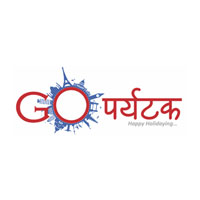
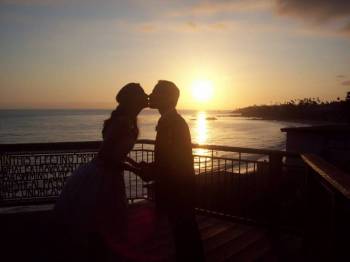 6D/5N
6D/5N
 7D/6N
7D/6N
 6D/5N
6D/5N
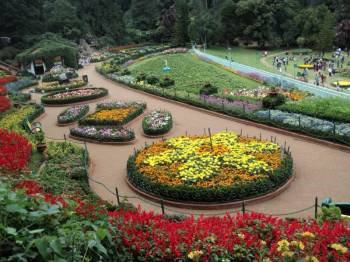 6D/5N
6D/5N
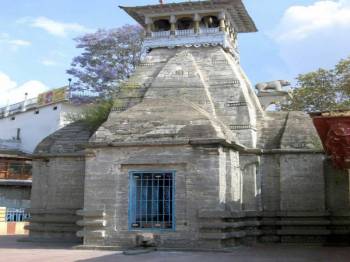 6D/5N
6D/5N
 11D/10N
11D/10N
Munnar - Thekkady - Madurai - Rameshwaram - Kanyakumari - Trivandrum - Alappuzha - ..
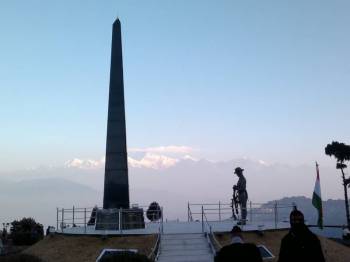 12D/11N
12D/11N
 9D/8N
9D/8N
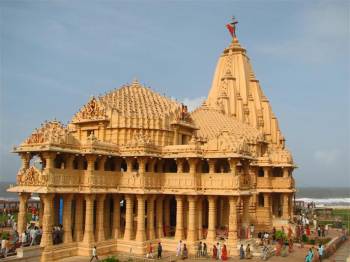 7D/6N
7D/6N
 6D/5N
6D/5N
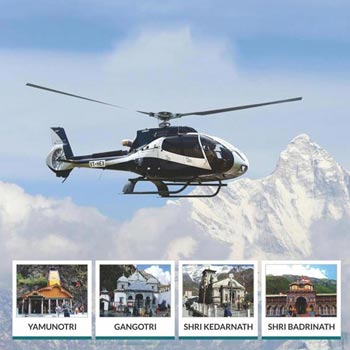 6D/5N
6D/5N
Chardham Yatra By Helicopter Tour
Yamunotri - Gangotri - Kedarnath - Badrinath
 6D/5N
6D/5N
Srinagar,Pahalgam,Gulmarg,Sonamarg,Srina..
Srinagar - Pahalgam - Gulmarg - Sonamarg
 6D/5N
6D/5N
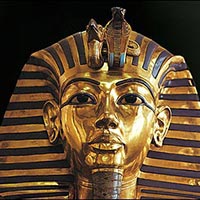 6D/5N
6D/5N
 6D/5N
6D/5N
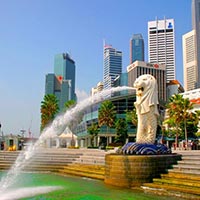 6D/5N
6D/5N
 6D/5N
6D/5N
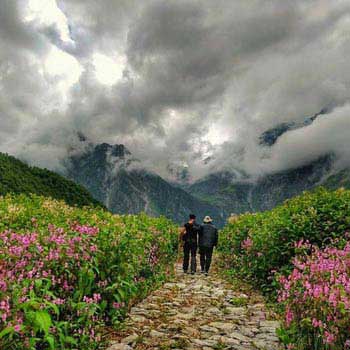 6D/5N
6D/5N
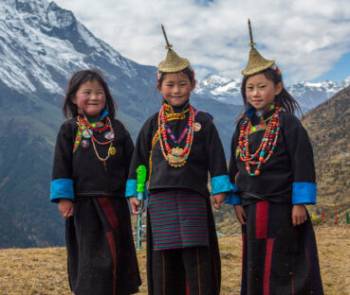 5D/4N
5D/4N
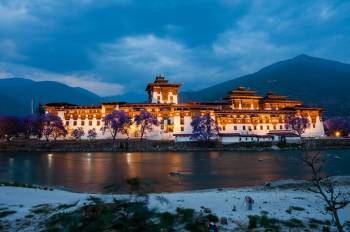 7D/6N
7D/6N
6 Nights/ 7 Days - Bhutan Happiness Tour
Punakha - Bumthang - Paro - Thimphu - Phobjik
 20D/19N
20D/19N
20 Days Land Package Country Tour BHUTAN..
Punakha - Paro - Phuntsholing - Bagdogra - Bumthang - Mongar - Trashigang - Trongsa..
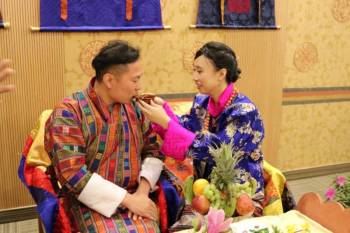 4D/3N
4D/3N
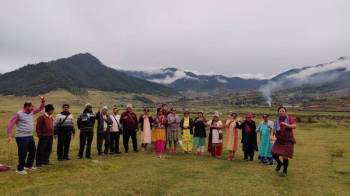 6D/5N
6D/5N
 7D/6N
7D/6N
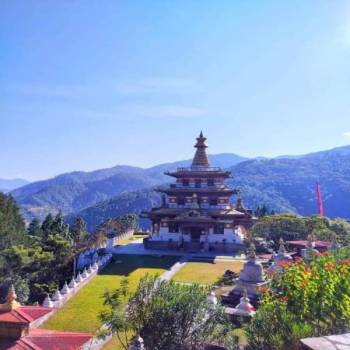 7D/6N
7D/6N
Rimso 7 Days 6 Nights Bountiful Tour fo..
Thimphu - Punakha - Paro - Phuentsholing
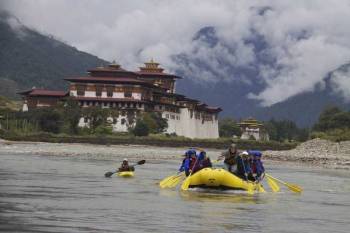 7D/6N
7D/6N
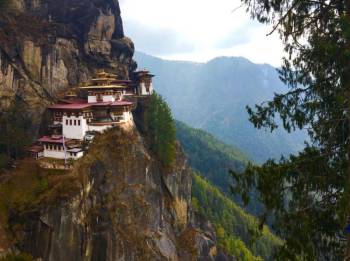 8D/7N
8D/7N
Jalpaiguri - Thimphu - Paro - Punakha - Phuentsholing